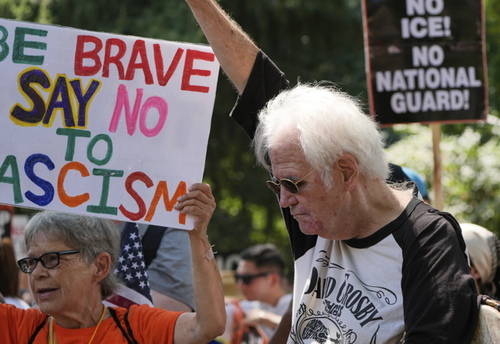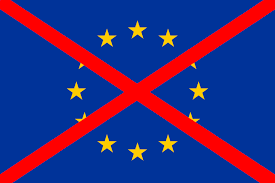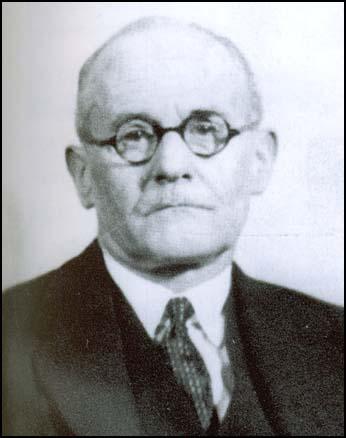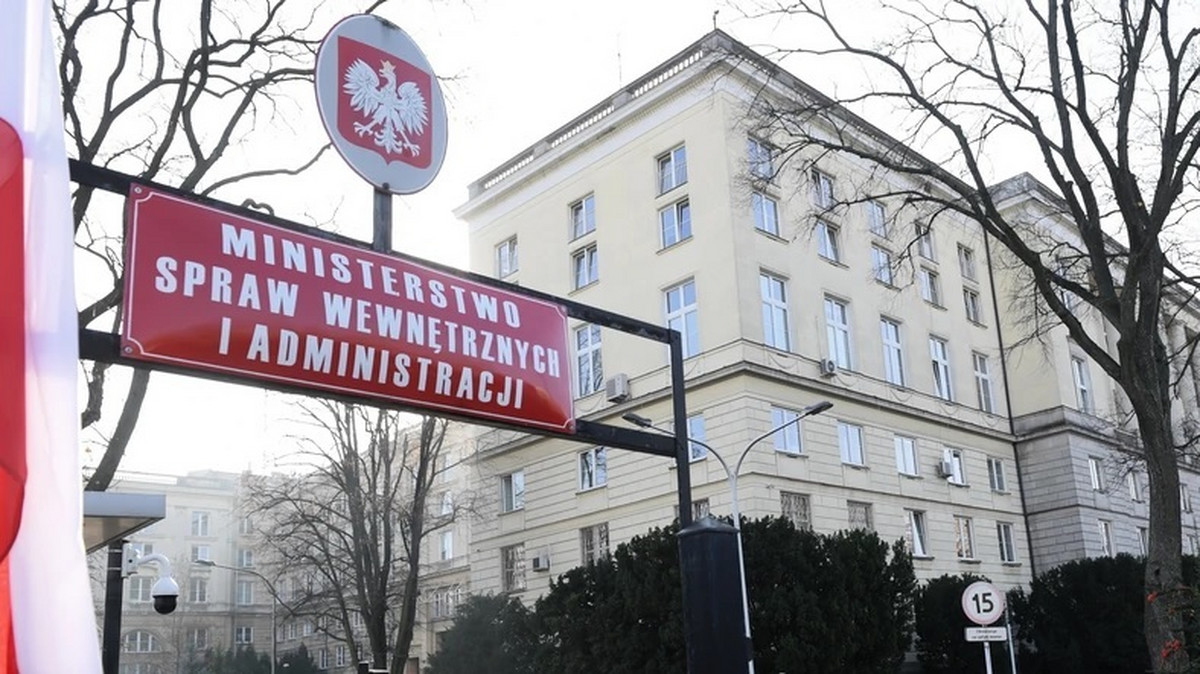
Democratic Party’s Color Revolution: A Strategic Assessment Through 2028
Submitted by Forward Observer,
A Color Revolution is a coordinated campaign to force political change (revolution) by mobilizing mass protests; undermining government legitimacy, authority, and capacity; and persuading citizens, elites, and institutions to withdraw their support – often backed by foreign funding, media, and training.
HAPPENING NOW MULTIPLE SELF DRIVING WAYMO CARS SET ON FIRE AMID UNREST IN LOS ANGELES
pic.twitter.com/OIn6EUJ98a
— Insider Paper (@TheInsiderPaper) June 9, 2025
Bottom Line Up Front: The anti-Trump resistance has adopted a Protest > Resistance > Revolution strategy that will take them through the 2026 midterms and into the 2028 presidential election season. The brunt of organized resistance is likely to occur after the midterms, with an often unstated option to transition from resistance to revolution coinciding with the outcome of the 2028 presidential election. – Mike Shelby, founder of Forward Observer
Last month, the nation’s largest anti-Trump resistance group announced its phased strategy to resist and ultimately end the Trump administration by any means necessary.
 Old White liberals carry signs during a protest against President Donald Trump’s federal takeover of policing of the District of Columbia, Saturday, Aug. 16, 2025, in Washington. (AP Photo/Alex Brandon)
Old White liberals carry signs during a protest against President Donald Trump’s federal takeover of policing of the District of Columbia, Saturday, Aug. 16, 2025, in Washington. (AP Photo/Alex Brandon)Efforts over the past six months have focused on local outreach and organizing, culminating in several „national days of action.” These protests have been symbolic and mostly toothless, but these groups have demonstrated an ability to sustain a national protest movement. At least two protests have mobilized roughly three million participants, with others numbering in the hundreds of thousands. This is an important metric, and we’ll come back to it later.
Broadly, this strategy is broken up into three phases: Protest > Resistance > Revolution.
Protest (You Are Here)
Phase 1 exhibits relatively low-risk actions such as protests at government buildings and other demonstrations against symbols of power. These pose no threat to a government, but are used to gauge popular support for the opposition movement, building legitimacy for passive and active resistance, and boost the confidence of actors for larger demonstrations in the future.
Selective Resistance (2025-2026)
After support and legitimacy are gained through symbolic protests, an organized resistance movement can begin engaging in selective political defiance. These actions include civil disobedience such as sit-ins and occupations, boycotts, and sustained, disruptive demonstrations that garner media attention, build support, and cause embarrassment for the authorities, often leading to government overreaction (which reinforces the Color Revolution narrative).
Mass Resistance (2027-2028)
When Selective Resistance achieves active support from a substantial portion of society (typically 15-30% or more), a resistance movement can begin coordinated, targeted, and nonviolent strategic action like national strikes and boycotts, large scale disruption to economic activity and civil society, and other forms of mass political defiance designed to damage a government’s legitimacy, authority, and capacity.
Revolution (2028-2029+)
Revolution — the active campaign to oust a leader from power — is not a foregone conclusion. Historically, failed or contested elections are the primary trigger for these Color Revolutions, which is to say that a revolution is much more difficult to execute following a clean and uncontested election. This is because of the perception of legitimacy, or the recognized right of a leader to be in power.
Leaders with weak claims of legitimacy are at higher risk, whereas those with firm legitimacy — like the 2024 election, where President Donald Trump won both the electoral college and popular vote — are virtually unassailable.
This is important because a Color Revolution movement actually needs a contested or highly unpopular outcome. Roughly 75% of all Color Revolutions over the past 25 years have coincided with disputed election results.
Otherwise, a resistance movement is left to de-legitimize a leader through other means, namely:
-
Media narratives and information operations
-
Defections of elites
-
Institutional noncooperation
-
International pressure
The methods above, when combined with mass resistance, are designed to weaken the „pillars of support” that keep a government functioning. This is key to the anti-Trump resistance strategy. These groups often cite two pieces of Color Revolution doctrine: The Six Pillars and the 3.5% Rule.
The Six Pillars
Noncooperation, also referred to as „strategic noncooperation” is the core of the strategy — you can erode a government’s legitimacy by reducing society’s cooperation with it.
The Six Pillars describe the underlying foundations that keep a government functioning. Taken from the training slide below, they are: Business, Labor, Faith, Education, Civil Service, and Military/Police. I’ll describe each of these in detail in a future brief, but for now, a quote from Gene Sharp — the godfather of Color Revolutions — will explain:
„By themselves, rulers cannot collect taxes, enforce repressive laws and regulations, keep trains running on time, prepare national budgets, direct traffic, manage ports, print money, repair roads, keep markets supplied with food, make steel, build rockets, train the police and army, issue postage stamps or even milk a cow. People provide these services… If people would stop providing these skills, the ruler could not rule.”
In short, a government — a dictator, an autocracy, even a legitimately elected president — depends on these lines of support to function. When a resistance movement convinces elements of these pillars with withdraw their support, the regime collapses.
The 3.5% Rule
In her book, Why Civil Resistance Works: The Strategic Logic of Nonviolent Conflict, researcher and strategist Erica Chenoweth claims that no regime has survived a resistance campaign that includes 3.5% of a country.
In other words, a study of over 300 violent and nonviolent resistance campaigns finds that every campaign that achieved the active and sustained participation of just 3.5% of the population succeeded in toppling a government.
So to put this into perspective: the anti-Trump resistance needs 3.5% of the United States, or roughly 12 million people, to participate. In two national days of protests, we’ve seen mobilizations of around three million protesters, or roughly 25% of what’s needed to achieve the 3.5% Rule.
Near-Term Assessment (2025-2026)
Anti-Trump protests have so far not been politically significant, but organizers have made substantial progress from a lackluster start. Inauguration Day 2025 protests were roughly a third — maybe as large as one-half — of the 2017 Inauguration Day protests. Since then, organizers have grown the movement rapidly, surpassing the previous largest single-day protest mobilization of the Trump era.
While progress had been steady, the movement does appear to have plateaued. Recent national days of protest have been muted (did you even hear about the last one on the news?), and this in the summer months when mobilizing capacity is at its highest. The lack of growth is a limiting factor, but it’s not a sign of weakness. The ability to repeatedly mobilize protesters in the low millions is indicative of a sustained protest movement able to transition into organized resistance.
This mid-decade redistricting plan by Texas, Ohio, and possibly other Red and Blue states, will likely encourage wider protest mobilization. Meanwhile, escalation from protest (Phase 1) into organized resistance (Phase 2) is almost certain if redistricting enables Republicans to keep a House majority after the 2026 midterms.
In the interim, anti-Trump organizers will likely spend the next roughly 14 months developing the human networks, communications infrastructure, and training/education to help Democrats win back the House.
Escalation after the midterms is a certainty, either way. If Dems break the Trump trifecta by regaining a House majority, resistance groups will gain legitimacy and use the „inside-outside” strategy to undermine the legitimacy, authority, and capacity of the Trump administration. If Republicans keep the House majority, especially through mid-decade redistricting, resistance groups will have the narrative they need to escalate through 2028. Pending anything else, it’s going to be a disruptive few years.
* * *
Mike Shelby, a former Intelligence NCO and contractor, with multiple deployments to Iraq and Afghanistan. In 2016, he founded Forward Observer, a private intelligence firm that focuses on domestic and international conflict. His team writes a daily Early Warning intelligence briefing, which is available through forwardobserver.com.
Tyler Durden
Thu, 08/21/2025 – 20:05


















